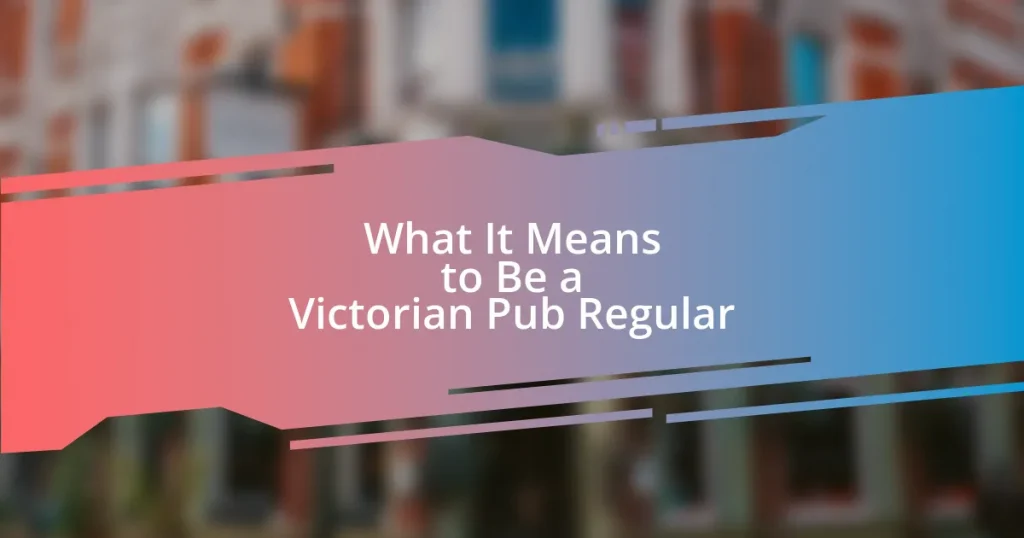Key takeaways:
- Tudor Revival Design features medieval British architecture with characteristics like steeply pitched roofs, half-timbering, and unique asymmetrical designs, evoking a whimsical, storybook feel.
- Interior elements emphasize warmth and rich textures, showcasing features like exposed beams, wainscoting, and earthy color palettes that create inviting and cozy atmospheres.
- The landscaping around Tudor homes enhances their charm with vibrant gardens, stone walkways, and natural elements, reflecting the home’s character and fostering connections with nature.

Understanding Tudor Revival Design
Tudor Revival Design is like stepping into a fairytale; it draws heavily from medieval British architecture, often showcasing steeply pitched gable roofs and intricate half-timbering. The use of brick and decorative stone adds a sense of warmth and history, almost making me feel like I could curl up with a good book in one of those charming homes.
What I find particularly fascinating is how Tudor Revival structures often have an asymmetrical appearance, giving them a unique character. Don’t you think it’s beautiful how these homes look lived-in, as if they tell stories of the families who have resided there? I remember visiting a Tudor Revival house in my neighborhood, and the cozy nooks and crannies made it feel wonderfully intimate.
These designs encourage a sense of community, too, as their inviting porches and artisanal details beckon neighbors to stop by for a chat. Have you ever felt that tug to sit on a porch and sip tea, watching life go by? That’s precisely the charm that Tudor Revival Design captures—it’s about connecting with life and with each other through beautifully crafted spaces.

Key Characteristics of Tudor Revival
Tudor Revival Design boasts several hallmark characteristics that make it distinctly charming. The steeply pitched roofs and decorative half-timbering provide a whimsical aesthetic that reminds me of storybook illustrations from my childhood. When I first laid eyes on a Tudor Revival home, I was instantly transported to another era, where medieval tales came alive in the architecture.
A defining feature that I truly appreciate is the use of brick combined with handcrafted stone detailing, which contributes to a warm, rustic appearance. I recall a lovely Saturday spent wandering through a historic neighborhood; every house had its own personality, but they all shared an inviting aura that felt comforting. It’s as if they were welcoming me with open arms, inviting me to uncover the secrets held within their walls.
Another characteristic that stands out is the array of asymmetrical designs. This unique aspect provides each Tudor Revival home with a sense of individuality, reminiscent of the stories they hold. I often find myself marveling at the quaint window placements and varied rooflines, making each home feel alive and full of character. Doesn’t it evoke a sense of nostalgia and charm, sparking your imagination about the lives led within such delightful spaces?
| Characteristic | Description |
|---|---|
| Steeply Pitched Roofs | These roofs give a unique silhouette and a quaint, storybook feel to the houses. |
| Half-Timbering | Decorative wooden frameworks create visual interest and a rustic appearance. |
| Brick and Stone Work | Combines warmth and historical context, often adding artisanal craftsmanship. |
| Asymmetrical Designs | Each home boasts unique features, enhancing individuality and charm. |

Interior Elements You’ll Love
Absolutely! I love diving deeper into the interior elements of Tudor Revival Design, as they reflect not only history but also a cozy lifestyle. You simply can’t help but appreciate the rich textures and warm atmospheres that characterize these interiors. I remember walking into a beautifully preserved Tudor Revival home and being immediately enveloped by the wood beams overhead, almost feeling like I had entered a different era. The deep, rich colors of the walls and tapestries created a welcoming embrace that invited me to linger and explore every nook.
Here are some interior elements that truly stand out:
- Exposed Beams: These wood beams provide a stunning visual focus that adds depth and character to the space.
- Wainscoting: This decorative wood paneling adds elegance to walls while evoking that historical charm.
- Fireplaces: Often large and ornate, these focal points create a warm gathering space, perfect for cozy evenings.
- Leaded Glass Windows: Their unique design brings in soft, filtered light while enhancing the vintage feel of the home.
- Earthy Color Palettes: Rich browns, deep greens, and warm reds contribute to the comforting atmosphere, evoking a sense of nature.
Let me tell you, the intricate details in these interiors often tell a story. I recall a charming study I found in one of the Tudor homes, where a rich oak desk stood before a fireplace, surrounded by books that seemed to whisper the secrets of their pages. The mix of textures—plush fabrics on the chairs combined with the rough stone walls—felt perfectly balanced, as if every element was deliberately chosen to create an experience. It’s that layered richness that makes Tudor Revival interiors so unforgettable.

Exterior Features That Stand Out
The exterior features of Tudor Revival homes are truly remarkable. One element that never fails to catch my eye is the charming gabled entrance. I remember a weekend road trip when I stumbled upon a Tudor Revival house with a distinct steeply-gabled entryway adorned with intricate wood carvings. Standing there, I felt as if I were stepping into a fairy tale, eager to discover what lay inside. Doesn’t that just make you want to approach the front door and knock?
Another standout feature is the beautifully crafted chimneys that rise majestically from the rooflines. I once visited a historical estate where the brickwork of the chimney was so detailed that it felt like a work of art in itself. As I admired it from the garden, I found myself pondering the warmth of the fires that had once flickered there. It’s fascinating how such elements can evoke feelings of nostalgia and tradition while anchoring the design to the home’s character.
I also appreciate how the decorative half-timbering lends a playful touch to the facades. I fondly recall a walk through a neighborhood where the varying timber placements seemed to dance along the walls, almost like a whimsical pattern. Each house had its own story to tell through these details, sparking my imagination. What histories could these homes hold, wrapped in such unique exteriors?

Landscaping Ideas for Tudor Homes
Landscaping around a Tudor home can beautifully enhance its charming features. I remember visiting a Tudor Revival neighborhood where the gardens were alive with vibrant flowers like English roses and lavender. The lush greenery not only complemented the architecture but also created a lively, inviting atmosphere that made me want to stroll the pathways while taking in the whimsical scents of nature.
Incorporating stone walkways can further add to the allure; I once wandered through a landscaped area where the cobblestone paths led to quaint sitting areas tucked under climbing vines. It felt like a secret garden, a perfect retreat for quiet moments or lively gatherings. How could anyone resist spending an afternoon there, sipping tea and enjoying the serene beauty around them?
Using natural elements is essential in a Tudor landscape. I recall a home with a striking mix of evergreen shrubs and seasonal blooms that framed the entrance perfectly. This blend not only provided year-round interest but also echoed the rich, earthy tones of the Tudor design. Who wouldn’t admire how the landscaping could reflect the warmth and character of the home while inviting a bit of nature to intertwine with its historical narrative?















